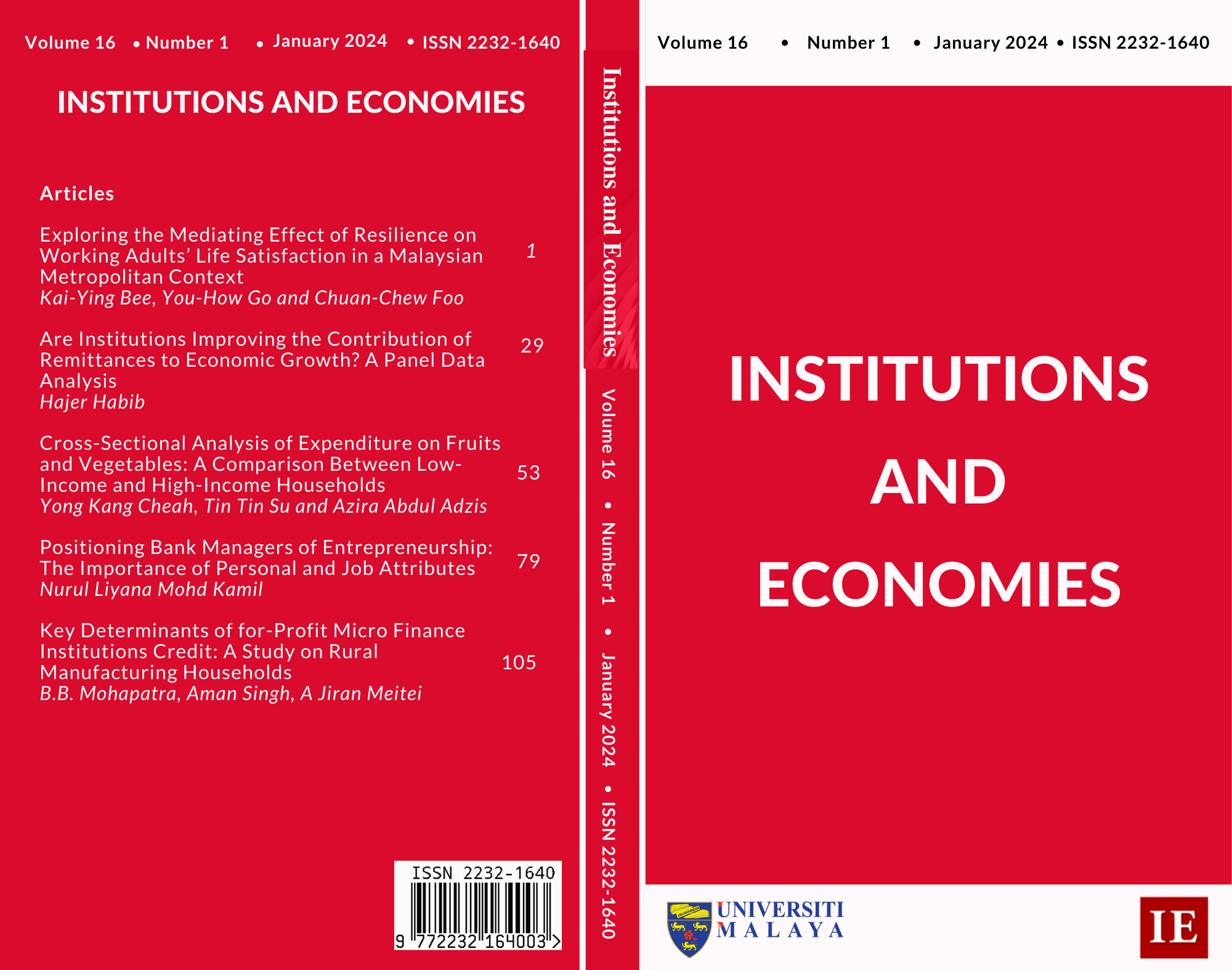Cross-Sectional Analysis of Expenditure on Fruits and Vegetables: A Comparison Between Low-Income and High-Income Households
Main Article Content
Abstract
The present study is the first to our knowledge to use quantile regressions
to explore the effects of sociodemographic and household factors on consumption
expenditure on fruits and vegetables (FV) among households of different income groups.
Data from the Malaysian Household Expenditure Surveys 2014 and 2016 were used for
pooled cross-sectional analyses. Quantile regressions were utilised to examine factors
affecting household expenditure on FV at different ranges of the expenditure. Results
showed that low-, medium- and high-income households headed by younger adults (<
60 years), females, less-educated individuals, Bumiputera and unemployed individuals
spent less on FV compared with those headed by older adults (≥ 60 years), males, welleducated individuals, non-Bumiputera and employed individuals. Furthermore, there
were positive relationships between quantiles of FV expenditure and household income,
rural households, tobacco consumption, and health insurance spending. In conclusion,
household heads’ sociodemographic characteristics and household profiles play an
important role in influencing household expenditure on FV. Findings obtained in the
present study can assist policymakers in formulating better intervention measures and
assistance directed toward improving FV intake. Policymakers could consider subsidising
FV purchases and promoting FV consumption among female-headed households.
Additionally, health awareness programmes could target urban households with single
and less-educated heads.
Downloads
Article Details
Submission of a manuscript implies: that the work described is original, has not been published before (except in the form of an abstract or as part of a published lecture, review, or thesis); that is not under consideration for publication elsewhere; that its publication has been approved by all co-authors, if any, as well as tacitly or explicitly by the responsible authorities at the institution where the work was carried out. Transfer of copyright to the University of Malaya becomes effective if and when the article is accepted for publication. The copyright covers the exclusive right to reproduce and distribute the article, including reprints, translations, photographic reproductions, microform, electronic form (offline and online) or other reproductions of similar nature.
An author may self-archive the English language version of his/her article on his/her own website and his/her institutions repository; however he/she may not use the publishers PDF version which is posted on www.ijie.um.edu.my. Furthermore, the author may only post his/her version, provided acknowledgement is given to the original source of publication and a link must be accompanied by the following text: The original publication is available at www.ijie.um.edu.my.
All articles published in this journal are protected by copyright, which covers the exclusive rights to reproduce and redistribute the article (e.g. as offprint), as well as all translation rights. No material published in this journal may be reproduced photographically or stored on microfilm, in electronic database, video disks, etc., without first obtaining written permission from the publishers. The use of general descriptive names, trade names, trademarks, etc., in this publication, even if not specifically identified, does not imply that these names are not protected by the relevant laws and regulations.
The copyright owners consent does not include copying for general distribution, promotion, new works, or resale. In these cases, specific written permission must first be obtained from the publishers.

